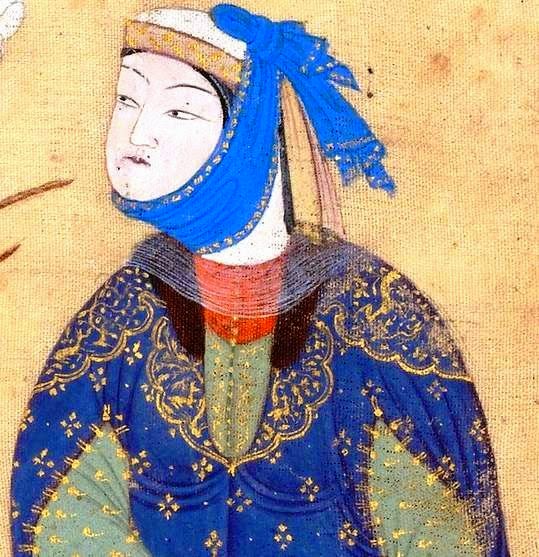This painting is small as we would expect on a muraqqa illustration but this was painted as a single piece. It is just over 7 by 4 inches. The work is done in ink, gold gilt and tempera which is a technique of pigment solids suspended in egg white or similar substance. This piece is signed and dated A.H. 1039 A.H./1630 A.D.
Aqa Reza led a shift from paintings as a lesser part of a book and he moved into a genre of paintings as a separate and stand alone entity unto itself. Part of it is his incredible talent as a painter but there was also an economic component. Shah Abbas had solidified Persia's foreign policy and there was not the need for tribute that was a major impetus for manuscript production for other Shahs in the sixteenth century.
A major shift in style occurred under the leadership of Aqa Reza. With the decrease in demand for major projects Aqa Reza innovated by decreasing the emphasis on backgrounds and focusing on figures and a few minor details. he also brought to bear far great emphasis on single major work rather then a massively expensive manuscripts using a variety of artists of varying degrees of talent. In the detail above we see a simple brown background over painted with a simple gold gilt design.
The quality and detail of the background is about what we would expect in unremarkable margin decorations of earlier work. Compare the gold gilt in the field to the margin decorations in Reza 'Abbasi Figure with Animals in Margin. The gold may well be an after thought perhaps in response to a buyer who resisted the new simplicity. The flower in the woman's hand is a nice touch to keep the painting from looking so empty.
Keep in mind this image above is magnified so we can see painstaking detail in each strand of hair on her forehead. It is commonly said of Aqa Reza that his style included "pursed lips" but note that under magnification the mouth is wider and the "pursed lips" appear top be applied.
When I was first learning to understand Aqa Reza the defining identification marker for me was his sashes and fabric folds. We see this in the image above the quintessential Aqa Reza style sash.
One of the hallmarks to Aqa Reza's style is his attention to detail as seen here in this highly magnified detail of the bottle,
Artist: Painting by Riza-yi `Abbasi (ca. 1565–1635)
Object Name: Illustrated single work
Date: dated A.H. 1039/ A.D. 1630
Geography: Iran, Isfahan
Culture: Islamic
Medium: Opaque watercolor, ink, and gold on paper
Dimensions: Painting: H. 6 7/8 in. (17.5 cm) W. 4 3/8 in. (11.1 cm) Page: H. 7 1/2 in. (19.1 cm) W. 4 15/16 in. (12.5 cm) Mat: H. 19 1/4 in. (48.9 cm) W. 14 1/4 in. (36.2 cm)
Classification: Codices
Credit Line: Purchase, Francis M. Weld Gift, 1950
Accession Number: 50.164
The catalog entry at the Met reads Opaque watercolor but it is displayed as tempera. I suspect that tempera is correct.














